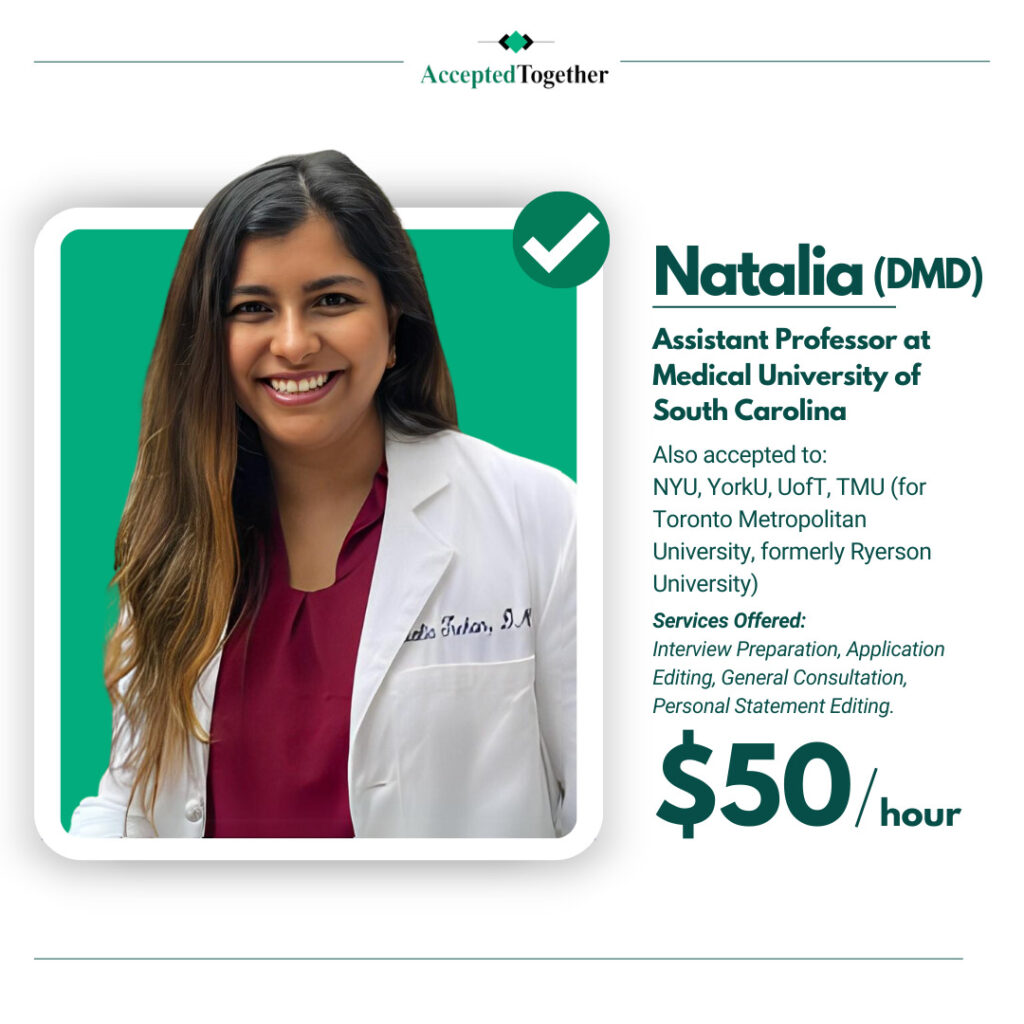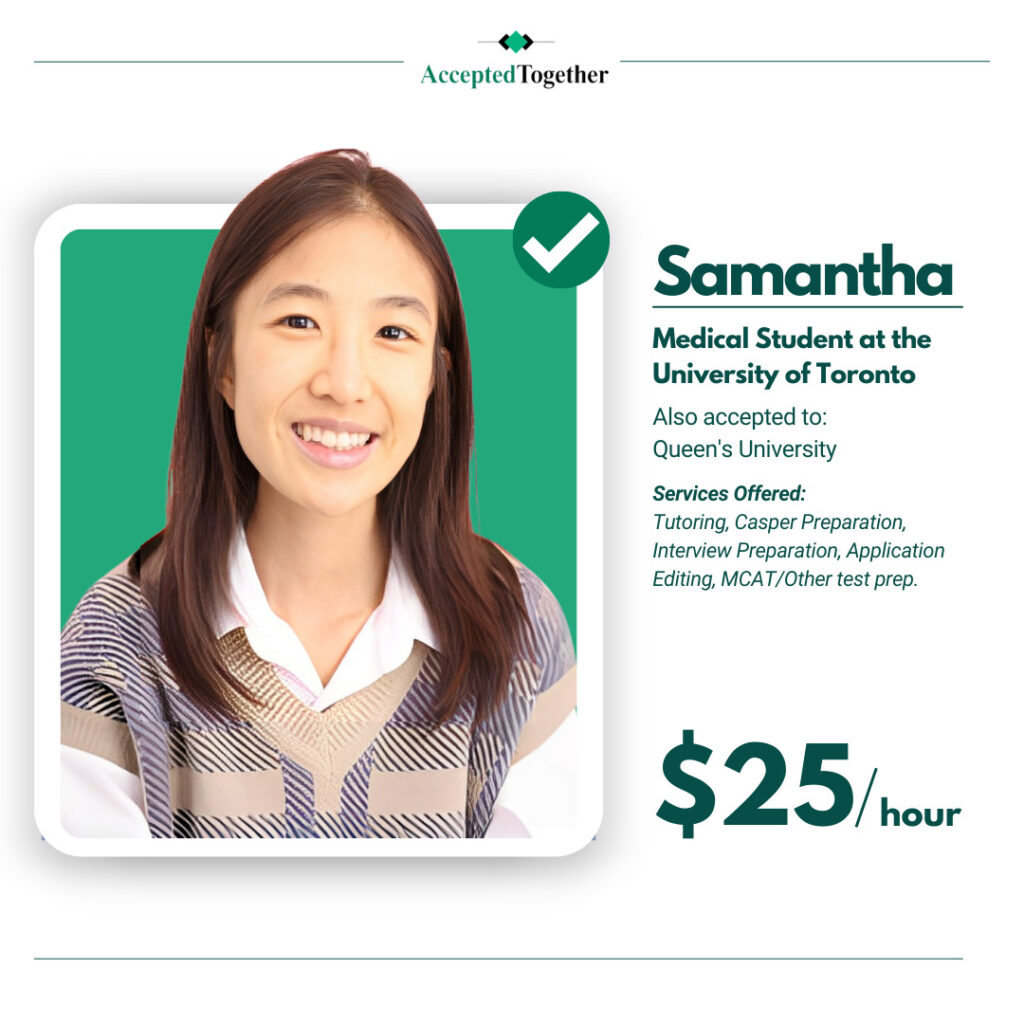Last updated on May 5th, 2025 at 01:41 pm
Table of Contents
Introduction
Asking someone to write you a medical school letter of recommendation can feel awkward. You’re not just asking for a favor — you’re asking someone to vouch for your potential as a future physician. It’s one of those parts of the application process that’s easy to put off but has a major impact on how you’re evaluated. Admissions committees rely on these letters to get a sense of your character, your work ethic, and how others view your readiness for medicine.
Whether it’s your professor, research supervisor, physician mentor, or volunteer coordinator, your referees need to actually know you — and know you well. Generic praise from a big name carries less weight than a detailed, genuine letter from someone who worked with you closely. The goal isn’t just to meet the minimum requirement — it’s to submit letters that actually add something to your application.
In this guide, we’ll walk through how to get strong reference letters that stand out, who you should ask, how to approach them, and what to do if things get tricky. If you’re prepping your application now, this is the time to get your strategy in order — strong recommendation letters can make a real difference.
Know What Each School Wants
When it comes to medical school applications, submitting a letter of recommendation isn’t just a checkbox. Each program has its own expectations around how many letters they want, what type of letters are acceptable, and how these letters should be submitted. Missing the mark here — even slightly — can lead to delays or weaken your application, even if the rest of your materials are solid. Understanding the details ahead of time helps you plan and avoid unnecessary last-minute stress.
Number of Letters
Most med schools ask for three letters, but the actual number can vary depending on the program. Some may require as many as four or five, while others will cap it at three and disregard extras. While the common setup includes two letters from science instructors and one from a non-science professor, other configurations can also work depending on the school and your academic background.
If you’re applying to multiple schools, it’s worth keeping a document that lists out each program’s requirements, so you’re not guessing later. This is especially important if you’re a non-traditional applicant or if you’re submitting to both MD and DO programs. Some osteopathic programs, for example, want a reference from a DO physician to show that you’ve explored osteopathic medicine directly.
In addition to fulfilling the minimum, some applicants like to gather an extra letter or two in case one writer backs out or turns in something weaker than expected. Just make sure you don’t overdo it — quality trumps quantity. Admissions committees won’t be impressed by an inbox full of generic character references. A few thoughtful, well-written evaluations from people who know your work well will carry more weight than a pile of form letters.
Letter Types
Medical schools accept different formats when it comes to submitting evaluations. There are three common types:
- Committee Letter:
This is written and submitted by your undergrad institution’s premed advising committee. It typically includes input from multiple professors and reflects your school’s overall assessment of you as a candidate. If your school offers this option, use it. Programs expect students to go through this process when it’s available, and skipping it without a good reason might raise questions. - Letter Packet:
Some universities don’t do a full committee letter but instead collect individual letters from your chosen writers and send them as a group. These are often handled through your school’s career center or pre-health office. Unlike a committee letter, there’s no added commentary or summary — it’s simply a bundle of separate letters sent together. - Individual Letters:
These are submitted separately by each recommender. This option is commonly used by non-traditional applicants or students whose schools don’t offer letter collection services. It gives you more flexibility to tailor your letter choices based on your experiences, like research, clinical exposure, or volunteer work.
Make sure you understand which formats each of your target schools will accept. Some schools may prefer or even require one specific format, so it’s worth double-checking this detail on their admissions websites.
Platform Limits
Each application service has its own rules when it comes to uploading and assigning recommendation letters. Here’s a quick breakdown:
- AMCAS (for MD programs):
Allows up to 10 letters. You don’t have to use all 10, but the system gives you flexibility. One of the perks of AMCAS is that you can choose which letters go to which schools. So if you have a variety of letters — maybe one that’s research-heavy and another that focuses on patient interaction — you can tailor them to match what different schools prioritize. - AACOMAS (for DO schools):
Limits you to 6 letters. Unlike AMCAS, this system sends the same set of letters to every school you apply to. So you’ll need to be strategic in which letters you choose to include, especially if you’re applying to a mix of programs. - TMDSAS (for Texas schools):
Accepts 4 letters total. Like AACOMAS, there’s no option to send different letters to different programs within the system. You’ll want to make sure your final set reflects a balanced mix — typically including academics, clinical, and service-oriented experiences.
Whatever platform you’re using, keep in mind that once a letter of recommendation is uploaded, you won’t be able to edit or delete it. Some systems allow your writers to re-submit a revised version, but you’ll have no control once it’s in. So choose wisely, communicate clearly, and make sure your writers know the submission process for the system you’re using.
Pick the Right People to Write for You
Not everyone you know is the right person to ask for a medical school letter of recommendation. It’s easy to assume that someone with a well-known title or a long resume will help boost your application, but what matters more is how well they know you — and what they can honestly say about your work, character, and commitment. Choosing who to ask isn’t just about checking off categories like “science prof” or “doctor.” It’s about building a lineup of people who can each offer a strong, personal account of your experiences and abilities.
Ideal Mix
Most students aim for a balanced group of writers who can speak to different parts of their journey. A common setup for an MD application includes two letters from science instructors, one from a non-science professor, and additional letters from supervisors in research, clinical, or extracurricular settings. If your school offers a committee letter, that often covers a portion of these, but you can still include individual letters as well — especially if you’ve worked closely with someone outside of a traditional classroom setting.
Your academic letters should come from people who taught you in for-credit courses where you received a letter grade. They should be able to comment on your work ethic, performance, and how you interacted with your peers and faculty. When choosing professors, go with those who’ve seen your work up close. A smaller class or a course with labs or discussion sections helps — it gives your instructor more to write about.
For your other writers, aim for those who can highlight skills that don’t always show up in your GPA. If you spent time in a research lab, ask your PI or postdoc (ideally both together) to write about what you contributed and how you handled challenges. If you’ve been involved in volunteering, clinical work, or a student group, ask a supervisor or program leadwho saw your commitment firsthand. These kinds of letters help round out your profile and show how you work in team settings or with patients.
If you’re applying to DO programs, at least one letter should come from a DO physician you’ve shadowed or worked with directly. Admissions committees in osteopathic medicine often look for evidence that applicants have spent time understanding their approach and values.
Letters from extracurricular contacts can be useful too — especially if they relate to one of your most meaningful activities in the AMCAS Work and Activities section. Someone who saw you lead a project, teach, or step up when things were tough can often write a more memorable letter than a distant professor.
What to Avoid
There are a few categories of writers you should probably steer clear of, even if they’re well-intentioned. First off, don’t ask someone just because they’re famous, highly ranked, or connected to the school you want to attend. If they don’t know you well, their letter will likely be vague or formulaic. Committees can spot a generic evaluation quickly — and it won’t help.
Family members, family friends, clergy, and other personal acquaintances are usually not appropriate unless they’ve worked with you in a formal, professional setting. Even then, if the relationship is primarily personal, their letter could come off as biased.
Also avoid anyone who seems hesitant when you ask. If someone doesn’t respond with an enthusiastic yes, they probably won’t write a strong letter of recommendation. A weak or neutral letter, even if it’s polite, can lower the overall impression of your file. You’re better off going with someone who may have a less flashy title but can write with confidence and detail.
Finally, don’t choose people just to fill space. If you’ve already met the required number of letters and you’re happy with the content, there’s no need to add more unless the new writer offers something different. Admissions teams read a lot of applications. Every piece of your file should add something new or meaningful. If a letter doesn’t do that, skip it.
Ask the Right Way (And At the Right Time)
Once you’ve figured out who to approach for your evaluations, the next step is knowing how and when to make the ask. Getting a solid letter of recommendation is more than a quick email or a passing hallway chat — timing and communication play a big part. A rushed request can lead to a generic write-up. A clear and well-timed request gives your writer space to put together something strong and specific. Below, we break down when to reach out, how to make the request, and how to follow up without being pushy.
Timing Tips
Ideally, you want to ask at least two to three months before you plan to submit your application. That means if you’re aiming for a June primary submission, you should start contacting your writers by early spring — around March or April. This gives them enough lead time to reflect on your work, look through any materials you send them, and write the letter without a last-minute scramble.
But waiting for the final semester before you apply isn’t always the best move. Sometimes it makes more sense to ask sooner — for example, right after a course ends, or at the conclusion of a research or clinical experience. If your connection with the professor or supervisor is still fresh, they’ll be more likely to remember details that will help the letter stand out. You don’t have to wait until you’ve officially started the application process. If someone is open to writing for you early, and you know you’ll need that evaluation later, it’s worth locking it in.
Just make sure that your school or storage service (like Interfolio or your career center) is able to hold the letter for later use, especially if you’re asking a year or more in advance.
How to Ask
When it comes to requesting a letter, the best method is still an in-person or virtual meeting. If it’s a current instructor or someone you see regularly, ask to meet briefly during their office hours or over a quick video call. Let them know why you’re asking them specifically and which qualities or experiences you think they can speak to. You don’t need to oversell — just be honest about your goals and your timeline.
If meeting isn’t possible, email works too, but make sure it’s clear and personal. Start by reminding them who you are and what class, project, or role they knew you from. Then ask directly whether they’d feel comfortable writing a strong letter of recommendation on your behalf. If they say yes, that’s when you can send along any supporting documents — like your resume, transcript, a draft of your personal statement, and any school-specific or AMCAS/AACOMAS guidelines.
Don’t assume they’ll say yes. And don’t send a stack of documents before you get confirmation. The goal is to get a strong, committed “yes” before moving forward.
Follow-Up
Even after someone agrees to write for you, that doesn’t guarantee they’ll submit it on time. Professors and supervisors are juggling a lot, and recommendation letters often get pushed to the bottom of the pile.
To avoid any hiccups, send a reminder about two to three weeks before your planned submission date. Keep it short and polite. Something like:
“Hi Dr. X, I’m submitting my med school applications on [date], so I just wanted to send a quick reminder about the letter of recommendation. Let me know if there’s anything else I can provide.”
If you don’t hear back, it’s okay to follow up once more — maybe a week later. If they still don’t respond or seem unsure, it’s worth considering a backup writer. You don’t want a missing letter to hold up your file or delay your application review.
Once the letter has been submitted, don’t forget to thank your writer. A short thank-you message goes a long way. And if you get interviews or an acceptance, it’s always nice to update them. Many writers appreciate hearing how things turned out — especially if they helped you get there.
Give Them What They Need
Once your writer agrees to help, your job isn’t done. A solid letter of recommendation doesn’t just come from good intentions — it comes from useful, specific details that help the writer explain who you are and why you’d make a strong med school candidate. That’s where preparation comes in. The clearer and more organized you are, the easier it is for your recommender to write something that actually supports your application. This next step is about giving them what they need without overwhelming them.
Prep Packet
After someone agrees to write for you, send them a short set of documents to make the writing process easier. This packet doesn’t need to be fancy, but it should be organized and relevant. Here’s what it should include:
- Personal statement draft: Even if it’s not final, this gives your writer a sense of your background and why you’re applying. It also helps them tie their letter into the overall narrative you’re building in your application.
- Resume or CV: This gives a quick look at your academic work, extracurricular involvement, research, volunteering, and jobs. If they only know you in one context, this can give them a better view of the full picture.
- Transcript or list of courses: Especially helpful for professors, this lets them see how you’ve performed academically — not just in their class but in related coursework too.
- List of key experiences: This can be a few bullet points reminding them of what you did in their course, lab, or program. If you worked on a specific project or helped lead something, include it. People write stronger letters when they’re reminded of concrete moments.
- Submission details: Don’t forget to include clear instructions on where and how to submit the letter. Whether it’s through AMCAS, AACOMAS, TMDSAS, or a third-party service, give them the link, your Letter ID, and any deadlines. Double-check these before you send anything.
You can also include a short note explaining how the materials are meant to help. Something like, “Attached are some supporting docs to help with the letter. Let me know if you’d like anything else.” Keep it casual and respectful of their time.
This prep packet isn’t just for convenience. It helps ensure the final letter of recommendation reflects your actual accomplishments, aligns with the rest of your application, and hits the points admissions committees care about — like your ability to work with others, solve problems, stay committed, and communicate well.
Don’t Overwhelm
While it’s important to provide resources, you don’t want to dump everything you’ve ever done into their inbox. More is not better — it’s just more. Avoid attaching 10-page documents, multiple drafts, or extra writing samples unless they specifically ask.
Think about what your writer already knows and what they might need a reminder on. If you had a close working relationship with someone — say, a lab supervisor or a volunteer coordinator — they probably won’t need a ton of background. But a professor who taught a large lecture course might benefit from a short refresher on what stood out about your work or interactions.
Also, try to keep your instructions clear and direct. If your school’s letter portal is tricky or if AMCAS asks for something specific, break it down so your writer doesn’t have to figure it out on their own. This helps avoid delays and confusion — and it’s just respectful of their time.
Finally, don’t send any of this until the person has said yes. Sending materials too early can come off as pushy, and if they end up saying no or don’t respond, you’ve wasted effort. Once you’ve got a clear agreement, go ahead and send the packet — just keep it concise and relevant.
Click to see hundreds of consultants who can mentor you:


What to Do if You’re Stuck
Sometimes even with the best planning, things don’t go smoothly. You might realize you’re short on science faculty to ask, or someone you thought would be your strongest writer is suddenly unavailable. In some cases, you might even be asked to draft your own letter. While this stuff can be frustrating, it doesn’t mean your application is in trouble. You’ve still got options. This section walks through what to do when you hit a snag — especially when it comes to academic references or unusual writing requests.
Can’t Get a Science Letter?
Most medical schools want at least two letters from professors who taught you biology, chemistry, or physics. These are the core science subjects they expect applicants to have covered — and they want to hear directly from the instructors who taught them. But what happens if you’re struggling to find people who meet that criteria?
This situation comes up more often than people think. Maybe you did well in a class but never spoke to the professor. Maybe it’s been years since you were last in undergrad. Or maybe the science departments at your school were huge, and your classes had hundreds of students.
Whatever the case, there are still ways to make it work.
First, revisit your old courses and see if there’s any professor you connected with more than you remember. Did you ever attend office hours? Email them with thoughtful questions? Turn in strong lab reports? If yes, reach out and explain the situation honestly. Ask if they’d be open to writing a letter of recommendation based on your performance, and offer to meet or share more context.
If they don’t know you well enough, you can try building that relationship. Some instructors are open to writing for students who take the time to reconnect. Ask to attend office hours again — even virtually — and talk about your goals. If they’re doing research or mentoring opportunities, ask to be involved.
Another strategy is to enroll in a new science course, especially if you’ve been out of school for a while. Community colleges or online programs can help you meet that requirement and give you a new professor to work with. It’s not a quick fix, but it’s an option worth considering.
As a last resort, if you truly cannot secure the science letters some schools ask for, you may need to adjust your list of target programs. Some schools are more flexible than others. Make sure you double-check the letter requirements for each one before applying.
Asked to Write Your Own?
It might feel strange, but it’s not uncommon for a recommender to ask you to draft your own letter of recommendation. This usually happens when they’re short on time or don’t know how to frame things. While it can be awkward at first, it’s better than getting a generic or rushed letter.
If this happens, the goal is to make their job easier — not to exaggerate or self-promote. Stick to the facts, and write in a professional tone. Focus on what they’ve seen you do: your work ethic, critical thinking, how you handled challenges, and how you interacted with others.
Start with a short intro explaining how they know you — what class, project, or setting — then go into a few examples that support the strengths you want the reader to notice. Make it specific. Admissions committees can tell when a letter is filled with empty compliments. Real examples carry more weight.
Once you’ve written a draft, give your recommender room to make edits or changes. Don’t assume they’ll send your version as-is. Let them take ownership of the letter so it still feels authentic coming from them.
Letters for Reapplicants and Storage Options
If you’re applying to med school for a second (or third) time, or you’re asking for letters long before the cycle opens, there are a few things to consider. How you handle recommendation letters in these situations can make a big difference. Whether you’re reusing past letters or looking to store early ones, it’s important to know how this fits into the larger application process and what the platforms actually allow.
Reapplying?
When you reapply, you’ll need to resubmit all of your application materials — and that includes each letter of recommendation. AMCAS, AACOMAS, and TMDSAS don’t carry letters over from one cycle to the next. Even if your referee submitted a glowing letter the first time around, it won’t be stored or saved within the system. That means you either have to get your previous letter writers to resubmit their original letters, or ask for new ones.
If your last cycle didn’t go as planned, take a minute to think about why. Was your GPA too low? Did your interview not go well? Or were your references not as strong as they could’ve been? If you think your letters might’ve been part of the problem — maybe they weren’t detailed, or didn’t speak to your clinical experiences — you may want to consider getting different writers this time around. Or, if your past recommenders are still a good fit, ask if they can update their letters to reflect what you’ve done since then.
At the very least, request that they change the date on the letter so that it reflects the new application cycle. An outdated letter can give the impression that you’re recycling old materials, or that you haven’t made progress since your last application. In some cases, updating the content is also worth it — especially if you’ve gained new experiences or responsibilities since the first version was written.
Some applicants reuse a mix of old and new letters, which works as long as they meet each program’s requirements. Just make sure that your set of references shows recent growth, addresses gaps from the previous cycle, and aligns with how you’re presenting yourself now.
Where to Store Letters
Whether you’re applying this year or preparing in advance, it’s smart to have a system for holding onto your letters — especially if you’re asking for them well ahead of time. Most universities offer letter storage services through their career center or pre-health advising office. These systems are set up to receive and store evaluations until you’re ready to apply. If you go this route, make sure to confirm how they handle submissions, how long they store documents, and how to request release when the time comes.
If your school doesn’t have this option — or you’re no longer a student there — you can use a third-party letter storage platform like Interfolio. These services act as a secure place to hold recommendation letters, and they can be connected directly to application systems like AMCAS or AACOMAS. They’re especially useful if you’re applying to multiple cycles or plan to apply for additional programs (like post-baccs, scholarships, or research positions) in the future.
One benefit of using a storage service is that it simplifies the process for your recommenders. They only need to submit the letter once, and you can direct it to multiple programs later. This reduces confusion and ensures consistency across your applications.
Just remember: even when storing letters, the content still needs to be strong and recent. Admissions committees expect to see recommendations that speak to your current skills, maturity, and readiness for medical training. Make sure your writers understand your timeline and know when the letter will be used.
Don’t Peek
When you’re managing your letters, you’ll come across a choice: waive or don’t waive your right to see them. In almost every case, you should waive. This might feel risky, especially if you’re unsure what someone will write. But admissions committees take this seriously — and they often view non-waived letters with skepticism.
A waived letter of recommendation carries more weight because it signals that the writer gave an honest, independent evaluation. If you choose to view your letters (or signal that you want to), it can suggest that the writer wasn’t free to be fully candid, or that the content may have been shaped by the applicant.
Application platforms like AMCAS and Interfolio will give you this option when you’re setting up your letter requests. Just select “yes” when asked if you want to waive your right of access. Once that’s done, you won’t be able to open or review the letter, but that’s exactly what admissions teams expect — and prefer.
Trust your judgment on who you’ve asked. If you’re unsure whether someone can write a strong, supportive letter, it’s better to ask someone else than to try and monitor what’s being written.
Click to see hundreds of consultants who can mentor you:


Conclusion
Getting strong reference letters takes more than just sending out a few emails and hoping for the best. It starts with knowing what each medical school expects, choosing people who can genuinely speak to your work, and giving them enough time and context to write something meaningful. Whether you’re getting a letter of recommendation from a professor, a physician you shadowed, or a research supervisor, your role is to make the process as straightforward as possible for them.
Be organized with your materials, plan ahead, and make sure your writers understand the deadlines and platforms involved. If you’re applying again, don’t rely on old letters without reviewing whether they still reflect your current experience and direction. And if you’re collecting evaluations early, make sure they’re stored somewhere secure and accessible when the time comes.
It’s also worth remembering that schools pay attention to how your referees describe your work ethic, communication skills, and readiness for medical training. The right mix of references can highlight different sides of who you are — academically, clinically, and personally — and help you stand out in a crowded pool of applicants.
The process isn’t complicated, but it does require attention to detail and good judgment at every step.
Frequently
Asked Questions
Most schools ask for a minimum of three letters — typically two from science instructors and one from a non-science professor. Some programs may request four or even five, so it’s important to check each school’s specific requirements. You can gather more than the minimum if you want options, but make sure every letter adds value and isn’t just included to increase the count.
Ideal writers are those who have directly worked with you and can confidently speak about your academic skills, clinical involvement, and personal qualities. Common choices include course instructors, research supervisors, physicians you’ve shadowed, and leaders from extracurricular or volunteer work. It’s better to choose someone who knows you well than someone with a big title who barely interacted with you.
Yes, but you’ll need to resubmit them, since application systems don’t carry them over from one cycle to the next. If you’re planning to reuse a previous letter, ask the original writer to update the date and ideally revise the content to reflect any new experiences or progress since your last application. Strong, current letters will help show growth and continued commitment.
After they agree to write for you, it’s helpful to send a personal statement draft, CV or resume, unofficial transcript, and a brief summary of your experiences with them. Also include clear submission instructions and deadlines based on the system you’re using (e.g., AMCAS or TMDSAS). Providing this information helps your writer craft a more detailed and personal letter.
When possible, it’s best to ask in person or over a video call, especially if it’s been a while since your last interaction. That way, you can have a conversation, gauge their response, and remind them of what you worked on together. If in-person or virtual meetings aren’t doable, email is fine — just keep it respectful, clear, and specific.
Some recommenders may request a draft from you, especially if they’re short on time or need help getting started. If this happens, write a professional, fact-based draft that includes your experiences, strengths, and how you contributed in the setting where you worked together. Avoid overhyping yourself — the letter should reflect how they would naturally speak about your work.
If you’re having trouble securing a science faculty reference, try reconnecting with professors whose courses you did well in, even if you didn’t interact much at the time. Show interest in their current work, attend office hours, or ask about opportunities to assist in their lab or class. If it’s been years since undergrad, consider enrolling in a new science course to build that academic relationship from scratch.
You can, but it’s strongly recommended that you waive your right to view them. Medical schools expect letters to be confidential, and doing so shows that you trust your writers to be honest and unbiased. Waiving access also gives your letters more credibility in the eyes of admissions committees.
You can use your school’s career center or pre-health advising office, or a third-party service like Interfolio, to store letters in advance. These services allow your writers to submit once, and then you can release the letters when you apply. Just be sure your recommenders know the timeline and where to send their evaluations.






